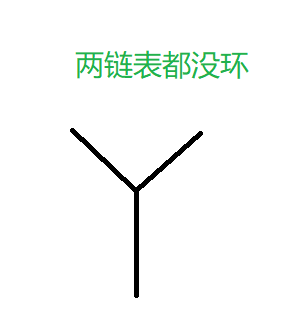版权声明:本文为博主原创文章,未经博主允许不得转载。 https://blog.csdn.net/zxt_1/article/details/88430470
文章目录
1.用数组结构实现大小固定的栈和队列
class arrayStack
{
private:
int *arr;
int len;
int index; //指向待插入位置
public:
arrayStack(int initSize)
{
if(initSize < 0)
throw "initSize is too small";
arr = new int[initSize];
len = initSize;
index = 0;
}
void push(int obj)
{
if(index == len)
throw "the stack is full";
arr[index++] = obj;
}
void pop()
{
if(index == 0)
throw "the stack is empty";
return arr[--index];
}
};
class arrayQueue
{
private:
int *arr;
int size;
int capacity;
int start; //指向待出队位置
int end; //指向待插入位置
public:
arrayQueue(int initSize)
{
if(initSize <= 0)
throw "initSize is too small";
arr = new int[initSize];
capacity = initSize;
size = 0;
start = 0;
end = 0;
}
void push(int obj)
{
if(size == capacity)
throw "the queue is full";
arr[end] = obj;
size++;
end = (end==capacity-1)?0:end+1;
}
int pop()
{
if(size == 0)
throw "the queue is empty";
int ret = arr[start];
start = (start==capacity-1)?0:start+1;
return ret;
}
};
2.实现一个特殊的栈,在实现栈的基本功能的基础上,再实现返回栈中最小元素的操作
class MyStack
{
private:
stack<int> stackData;
stack<int> stackMin;
public:
MyStack()
{
}
void push(int obj)
{
if(stackMin.empty())
stackMin.push(obj);
else if(stackMin.top() < obj)
stackMin.push(obj);
else{
int Min = stackMin.top();
stackMin.push(Min);
}
stackData.push(obj);
}
int pop()
{
if(stackData.empty())
throw "stack is empty";
stackMin.pop();
int ret = stackData.top();
stackData.pop();
return ret;
}
int getMin()
{
if(stackMin.empty())
throw "stack is empty";
return stackMin.top();
}
};
3.仅用队列结构实现栈结构、仅用栈结构实现队列结构
class TwoQueuesStack
{
private:
queue<int> data;
queue<int> help;
void _swap()
{
queue<int> tmp;
tmp = data;
data = help;
help = tmp;
}
public:
TwoQueuesStack(){}
void push(int obj)
{
data.push(obj);
}
int pop()
{
if(data.empty())
throw "stack is empty";
while(data.size() > 1)
{
help.push(data.front());
data.pop();
}
int ret = data.front();
data.pop();
_swap();
return ret;
}
};
class TwoStacksQueue
{
private:
stack<int> stackPush;
stack<int> stackPop;
public:
TwoStacksQueue(){}
void push(int obj)
{
stackPush.push(obj);
}
int pop()
{
if(stackPush.empty() && stackPop.empty())
throw "queue is empty";
else if(stackPop.empty()){
while(!stackPush.empty())
{
stackPop.push(stackPush.top());
stackPush.pop();
}
}
int ret = stackPop.top();
stackPop.pop();
return ret;
}
};
4.“之”字形打印矩阵

void printMatrixZigZag(int **matrix, int row, int col)
{
int aR = 0;
int aC = 0;
int bR = 0;
int bC = 0;
int endR = row-1;
int endC = col-1;
bool dir = false; //斜上
while(aR != endR+1)
{
printLevel(matrix, aR, aC, bR, bC, dir);
aR = (aC==endC)?aR+1:aR;
aC = (aC==endC)?aC:aC+1;
bC = (bR==endR)?bC+1:bC;
bR = (bR==endR)?bR:bR+1;
dir = !dir;
}
}
void printLevel(int **matrix, int aR, int aC, int bR, int bC, bool dir)
{
if(dir)
{
while(aR != bR+1)
cout<<matrix[aR++][aC--]<<" ";
}
else{
while(bR != aR-1)
cout<<matrix[bR--][bC++]<<" ";
}
}
5. 在行列都排好序的矩阵中找数

bool findNum(int **matrix, int row, int col, int target)
{
int X = 0;
int Y = col-1;
while(X<col && Y>=0)
{
if(matrix[X][Y] == target)
return true;
if(matrix[X][Y] < target)
X++;
else
Y--;
}
return false;
}
6.将单向链表按某值划分成左边小、中间相等、右边大的形式

Node *listPartition(Node *head, int pivot)
{
Node *sHead;
Node *sTail;
Node *eHead;
Node *eTail;
Node *bHead;
Node *bTail;
Node *tmp;
while(head)
{
tmp = head->next;
head->next = NULL;
if(head->val < pivot)
{
if(!sHead)
{
sHead = head;
sTail = head;
}
else
{
sTail->next = head;
sTail = head;
}
}else if(head->val == pivot)
{
if(!eHead)
{
eHead = head;
eTail = head;
}
else
{
eTail->next = head;
eTail = head;
}
}else{
if(!bHead)
{
bHead = head;
bTail = head;
}
else
{
bTail->next = head;
bTail = head;
}
}
head = tmp;
}
if(sTail){
sTail->next = eHead;
eTail = (eTail==NULL)?sTail:eTail;
}
if(eTail)
eTail->next = bHead;
return sHead?sHead:eHead?eHead:bHead;
}
7. 复制含有随机指针节点的链表

Node *copyList(Node *head)
{
if(!head) return NULL;
Node *cur = head;
Node *tmp = NULL;
while(cur)
{
tmp = cur->next;
cur->next = new Node(cur->val);
cur->next->next = tmp;
cur = tmp;
}
cur = head;
Node *curCopy = NULL;
while(cur)
{
tmp = cur->next->next;
curCopy = cur->next;
curCopy->rand = (cur->rand)?cur->rand->next:NULL;
cur = tmp;
}
Node *ret = head->next;
cur = head;
while(cur)
{
tmp = cur->next->next;
curCopy = cur->next;
cur->next = tmp;
curCopy->next = (tmp)?tmp->next:NULL;
cur = tmp;
}
return ret;
}
8. 判断两个单链表相交,若相交返回第一个相交节点


Node *getIntersectNode(Node *head1, Node *head2)
{
if(!head1 || !head2) return NULL;
Node *loop1 = getLoopNode(head1);
Node *loop2 = getLoopNode(head2);
if(!loop1 && !loop2) //两链表无环
{
return noLoop(head1, head2);
}
if(loop1 && loop2) //两链表有环
{
return bothLoop(head1, loop1, head2, loop2);
}
return NULL; //一个链表有环,一个无环
}
Node *getLoopNode(Node *head)
{
if(!head || !head->next || !head->next->next) return NULL;
Node *slow = head->next;
Node *fast = head->next->next;
while(slow != fast)
{
if(fast->next==NULL || fast->next->next==NULL)
return NULL;
fast = fast->next->next;
slow = slow->next;
}
fast = head;
while(slow != fast)
{
slow = slow->next;
fast = fast->next;
}
return fast;
}
Node *noLoop(Node *head1, Node *head2)
{
if(!head1 || !head2) return NULL;
Node *p1 = head1;
Node *p2 = head2;
int n = 0;
while(p1->next)
{
n++;
p1= p1->next;
}
while(p2->next)
{
n--;
p2 = p2->next;
}
if(p1 != p2) return NULL; //末尾指针不等,肯定不相交
p1 = (n>0)?head1:head2; //p1指向长链表
p2 = (p1==head1)?head2:head1;
n = abs(n);
while(n > 0)
{
n--;
p1 = p1->next;
}
while(p1 != p2)
{
p1 = p1->next;
p2 = p2->next;
}
return p1;
}
Node *bothLoop(Node *head1, Node *loop1, Node *head2, Node *loop2)
{
Node *p1 = NULL;
Node *p2 = NULL;
if(loop1 == loop2)
{
p1 = head1;
p2 = head2;
int n = 0;
while(p1 != loop1)
{
n++;
p1= p1->next;
}
while(p2 != loop2)
{
n--;
p2 = p2->next;
}
p1 = (n>0)?head1:head2;
p2 = (p1==head1)?head2:head1;
n = abs(n);
while(n > 0)
{
n--;
p1 = p1->next;
}
while(p1 != p2)
{
p1 = p1->next;
p2 = p2->next;
}
return p1;
}else{
p1 = loop1->next;
while(p1 != loop1)
{
if(p1 == loop2)
return loop1; //return loop2;
p1 = p1->next;
}
return NULL;
}
}